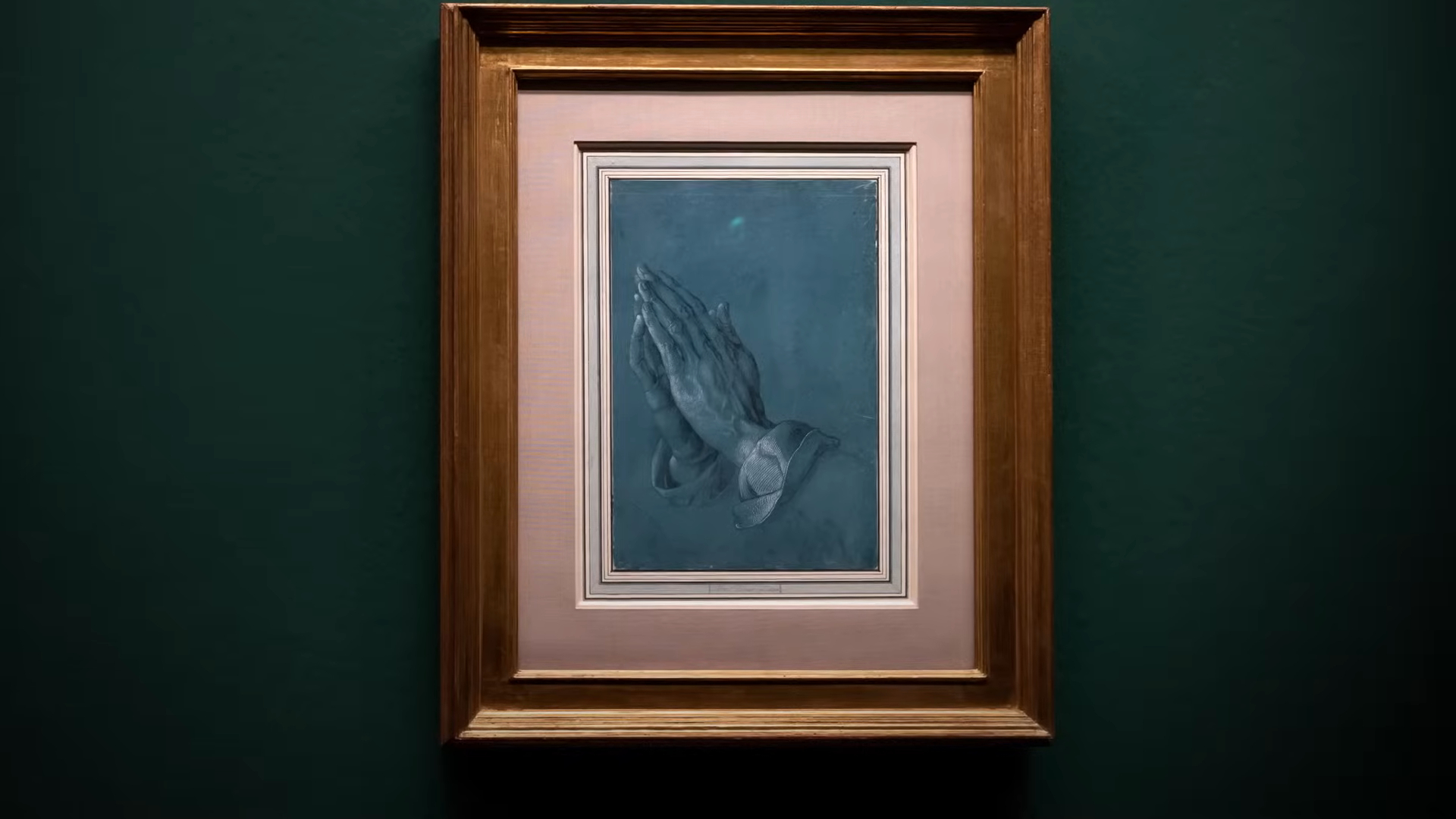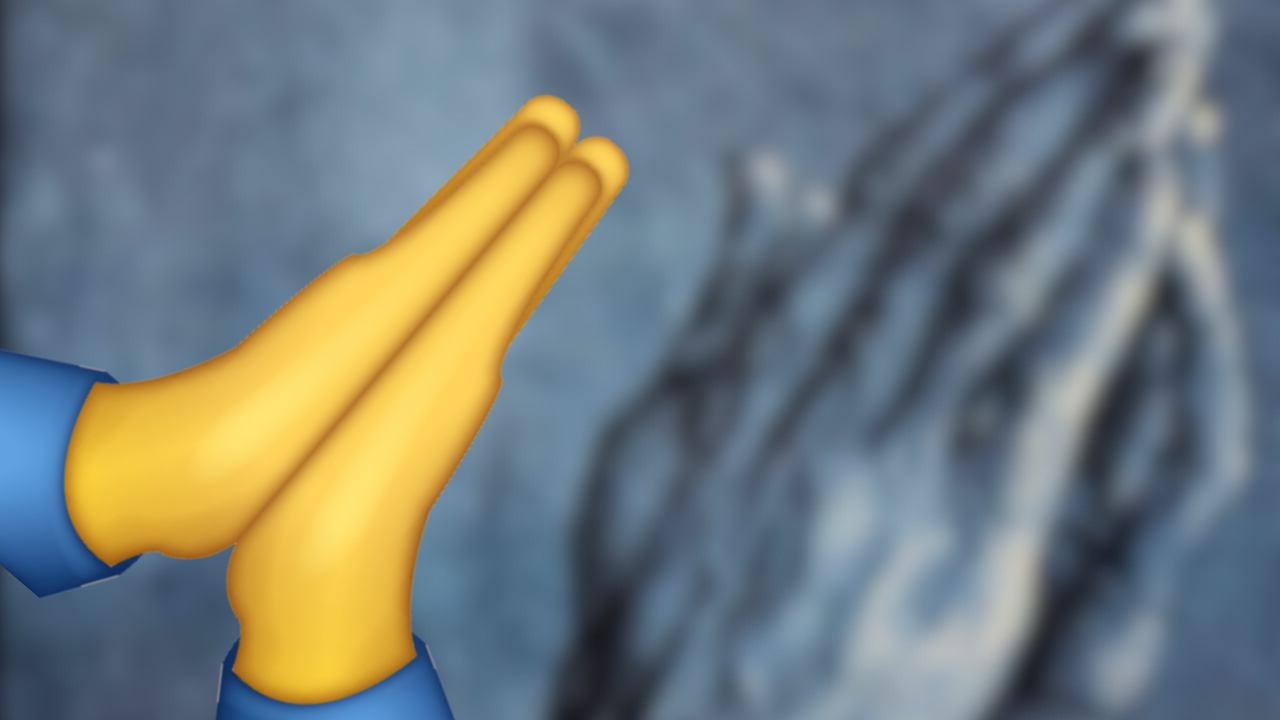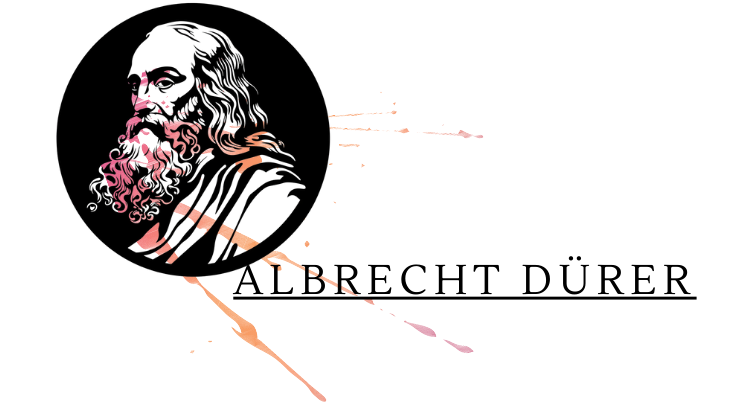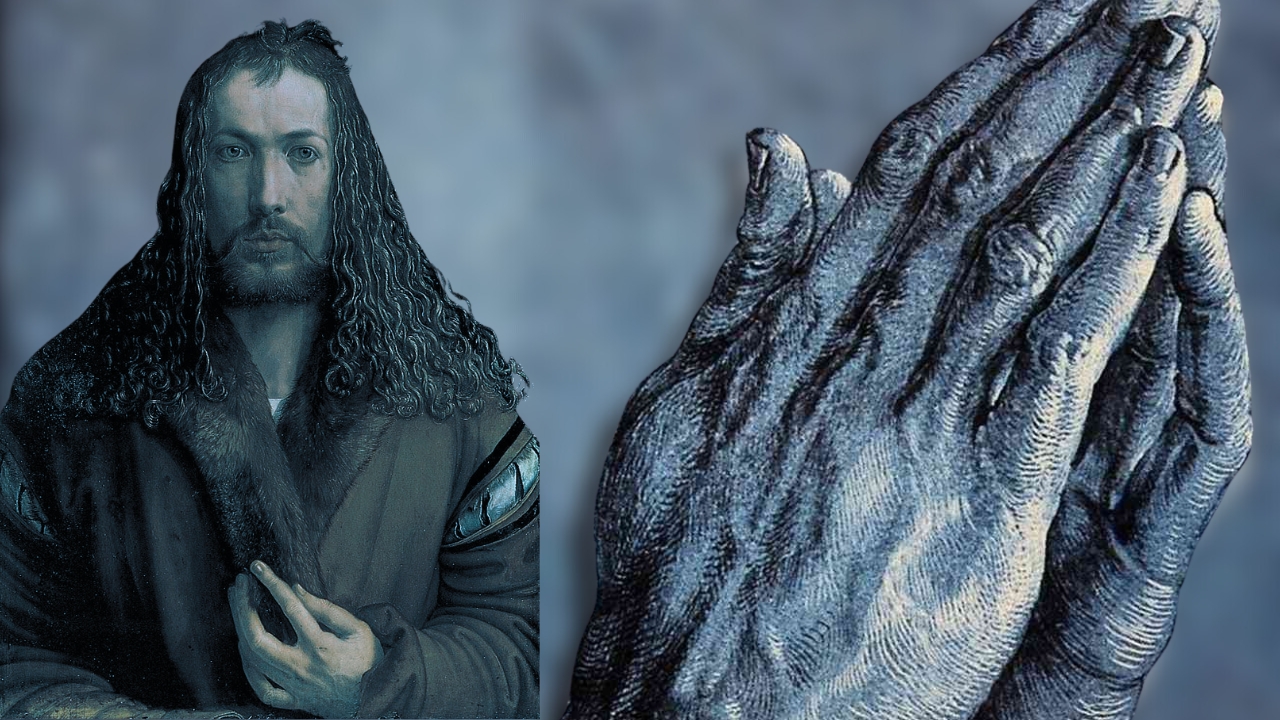In the early 16th century, Albrecht Dürer created Praying Hands (Betende Hände), a pen-and-ink drawing on blue paper he made himself.
Originally thought to be a preparatory sketch for Jakob Heller’s Heller Altar, the work highlights Dürer’s skill, which had gained recognition across Europe by his twenties.
During his 40-year career, Dürer produced renowned woodcuts and engravings. Created in 1508, Praying Hands likely depicts an apostle’s hands in prayer, possibly modeled after his brother’s hands, though unconfirmed.
Known as the “Leonardo of the North,” Dürer was a pivotal figure of the Northern Renaissance, contributing to printmaking, watercolor landscapes, and art theory.
One of his works is especially well-known, “Young Hare”
His celebrated works also include Melencolia, Saint Jerome in His Study, and Knight, Death, and the Devil.
Where can Albrecht Durer’s Drawing be Found Today?
Christof Metzger believes Dürer likely used his own hands as a reference for Praying Hands.
Although a fire destroyed the original altarpiece once believed to be the purpose of this sketch, a 17th-century copy by Jobst Harrich still survives.
Today, visitors can find both Harrich’s copy and Dürer’s original Praying Hands sketch at the Albertina Museum in Vienna, Austria.
Because of the delicate nature of Dürer’s original drawing, the museum displays only replicas permanently to ensure its preservation.
In 1508, Dürer could hardly have anticipated the level of care future generations would dedicate to protecting his work.
View this post on Instagram
Description of the Drawing
Dürer prepared a blue-toned paper for this drawing, outlining the hands in black ink and adding white highlights for depth.
Lighter tones on the left side create the illusion of light casting across the artwork.
- Dimensions: The drawing measures 29.1 cm in height and 19.7 cm in width.
- Technique:
- Paper: Handcrafted blue paper, specially prepared by Dürer himself.
- Ink and White Highlights: Black ink for primary details, with white heightening for added depth and emphasis on light.
- Composition: Light tones on the left side create an effect of light illuminating that part of the artwork.
Originally known as Study of the Hands of an Apostle (Studie zu den Händen eines Apostels), the drawing later became famous simply as Praying Hands.
Recognized today as one of the most celebrated drawings in art history, it has inspired considerable research and admiration, particularly over the last century.
Controversy over the Intended Purpose of Durer’s Praying Hands

For centuries, it was widely accepted that Albrecht Dürer created Praying Hands as a preparatory study for his Heller Altarpiece.
However, recent research has cast doubt on this theory, suggesting instead that the drawing may have served as a showcase of Dürer’s technical skill, aimed at attracting new patrons.
Alternative Theory
Art historian and chief curator of Vienna’s Albertina, Christof Metzger, proposed this new perspective.
Metzger, who organized Albertina’s celebrated Dürer exhibition in 2019-2020, suggested that Praying Hands may have been part of a campaign by Dürer to highlight his skill to potential suitors rather than a preparatory sketch.
Technical Mastery
The extraordinary detail of the drawing supports this theory, as Metzger argues that such fine craftsmanship might not have been dedicated to a peripheral sketch for an altarpiece.
- In the 19th century, consensus held that Praying Hands was a preparatory sketch for an apostle in the lower right corner of the Heller Altarpiece, completed in 1509.
- As recently as 2013, major exhibitions at Frankfurt’s Städel Museum and the National Gallery of Art in Washington, D.C., upheld this view.
While Metzger’s viewpoint has gained traction, the traditional view may see a resurgence as further research unfolds.
- Metzger suggests that Dürer used the drawing to attract new patrons by showcasing his skill.
- The altarpiece wouldn’t require such intricate work, implying the drawing had a greater purpose.
- Metzger speculates the hands might be Dürer’s own, noting a resemblance to his self-portraits.
Art history is replete with shifting theories, especially when it comes to centuries-old masterpieces. While Metzger’s argument currently prevails, the story of Praying Hands remains open to reinterpretation.
The Impact of Durer’s Praying Hands on Modern Culture
- In 2011, a student in Athens created a graffiti mural based on Dürer’s drawing on the side of a ten-story building in the city center.
- Unlike the original, the hands in this mural appear upside down.
- The cover for Drake’s track “6 God” on his album If You’re Reading This It’s Too Late features a reinterpretation of Praying Hands.
- A quick internet search today reveals countless images inspired by Dürer’s drawing, demonstrating its enduring influence.
The iconic painting continues to inspire, bridging Renaissance art and contemporary culture.
Where did the Praying Hands Originate?
Pinpointing the exact origin of the praying hands gesture is challenging, as different cultures and regions assign it various meanings.
Historians believe its earliest known use appears in Hinduism, thousands of years ago.
From there, the gesture spread, with many other emerging religions adopting similar forms, each adding its own spiritual or cultural significance.
What do Praying Hands Symbolise?
The symbol of praying hands holds a range of meanings, shaped by the context and culture in which it appears.
While many are familiar with interpretations within their circles, the gesture has a rich, varied history and symbolism worldwide.
Generally seen as a respectful gesture, praying hands can convey anything from obedience and submission to a simple, heartfelt greeting.
In Christianity, praying hands are a common symbol of openness and humility before God, symbolizing a personal connection to the divine.
Outside Christianity, praying hands are also meaningful in Judaism, Hinduism, and Buddhism, each with interpretations rooted in devotion and respect.
The gesture remains a timeless, cross-cultural icon for reverence and connection.
What are the Prayer Hands Called?
In yoga, practitioners call the gesture of hands held together Anjali Mudra and use it at the beginning and end of classes to promote composure.
Asian traditions believe it connects both sides of the brain.
In Western cultures, Christianity popularized the “praying hands” gesture, which is now widely recognized as a symbol of peace and centeredness across diverse backgrounds.
What is the Meaning of the Praying Hands Emoji?

The praying hands emoji, also called the folded hands emoji, carries a range of meanings depending on the user’s intent.
Its universal design allows for varied interpretations across cultures. Most commonly, it represents prayer or gratitude. In some Asian cultures, it can also signify a respectful greeting.
The emoji resonates with both religious and non-religious users, and conveys shared emotions like appreciation and respect without necessarily indicating a religious commitment.
The Bottom Line
For over five centuries, Praying Hands has resonated across religious and secular worlds, inspiring reinterpretations and remaining central to both classical art and modern media.
Dürer’s technique, delicate ink lines on handcrafted blue paper, demonstrates his skill and invites viewers into a moment of personal and spiritual reflection.
The drawing bridges art and spirituality, showcasing the power of visual art to transcend time and create enduring connections.

